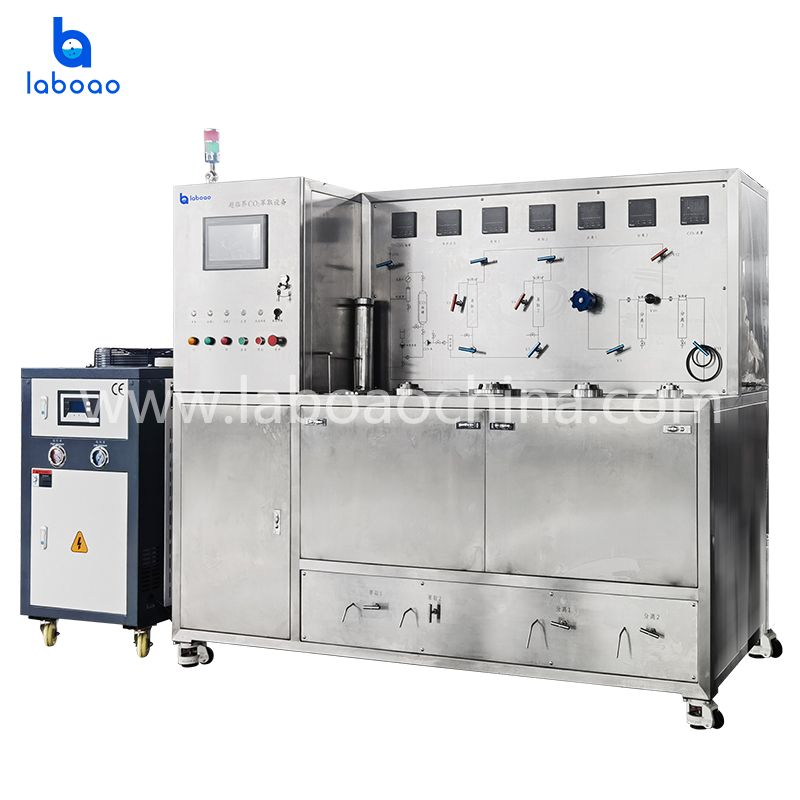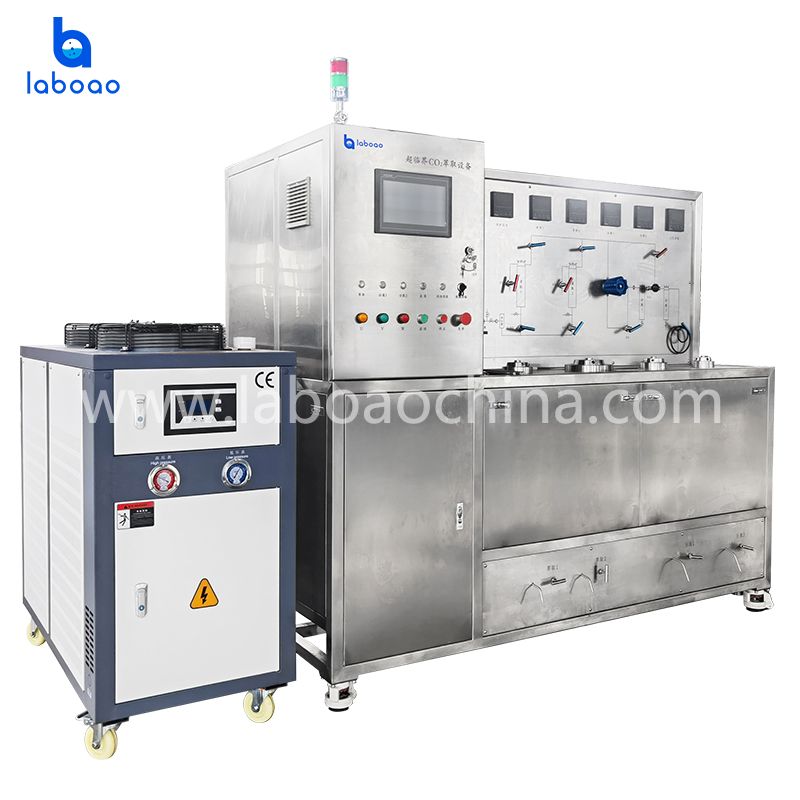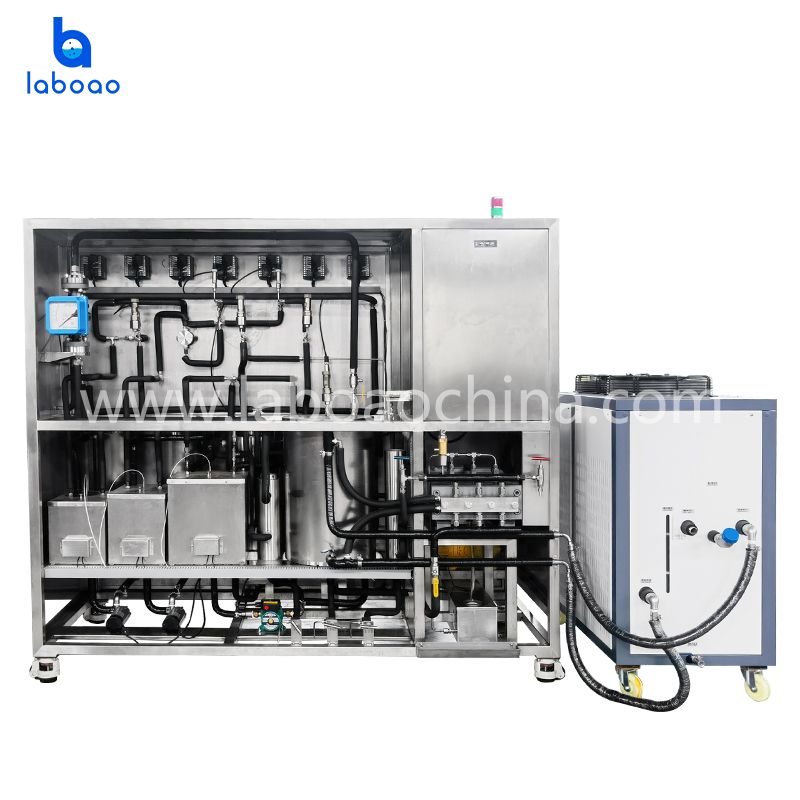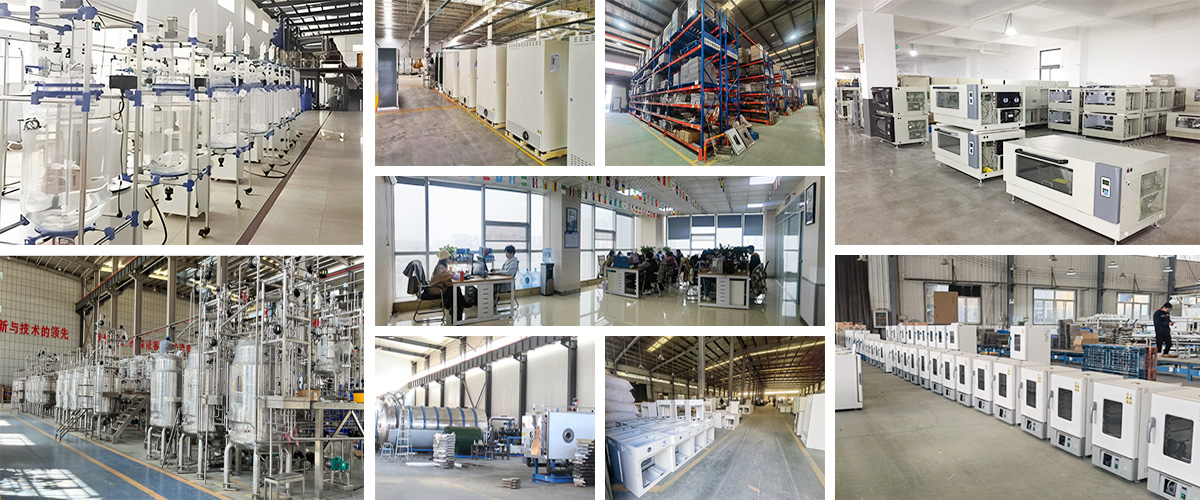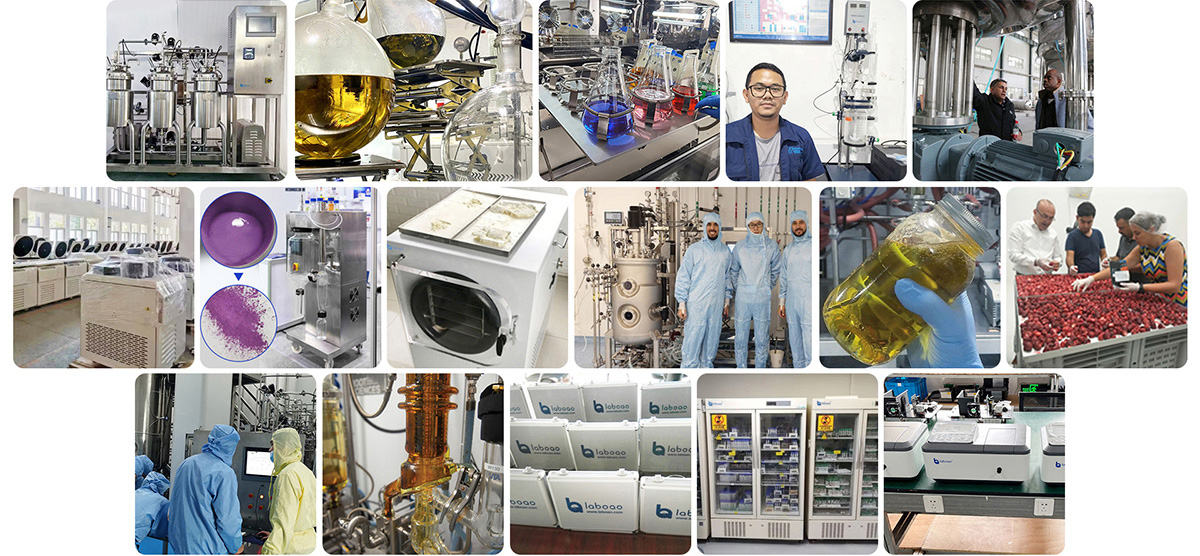DESCRIPTION
The principle of the supercritical CO2 fluid extraction (SFE) separation process is based on the relationship between the solubility of supercritical fluid and its density, that is, the influence of pressure and temperature on the solubility of supercritical fluid. In the supercritical state, the supercritical fluid is brought into contact with the substance to be separated, so that the components with polarity, boiling point and molecular weight can be selectively extracted in sequence. Of course, the extract obtained corresponding to each pressure range cannot be single, but the conditions can be controlled to obtain the ideal proportion of mixed components, and then the supercritical fluid can be turned into an ordinary gas by reducing pressure and raising temperature, and the extracted substances can be completely Or basically precipitate, so as to achieve the purpose of separation and purification, so the supercritical CO2 fluid extraction process is a combination of extraction and separation processes.
The supercritical CO2 device mainly consists of an extraction kettle, a separation kettle, a CO2 high-pressure pump, an entrainer pump, a refrigeration system, a CO2 storage tank, a heat exchange system, a purification system, a flow meter, a temperature control system, a pressure control measurement system, and a touch screen PLC. It is composed of control acquisition system, safety protection device, etc.
The characteristics of supercritical CO2 extraction determine that its application range is very broad. For example, in the pharmaceutical industry, it can be used for the extraction of active ingredients of Chinese herbal medicine, the refining of heat-sensitive biological drugs, and the separation of lipid mixtures; in the food industry, the extraction of hops, the extraction of pigments, etc.; in the spice industry, natural and Refining of synthetic fragrances; separation of mixtures in the chemical industry, etc. Specific applications can be divided into the following aspects:
1. Extraction of bioactive molecules from medicinal plants, extraction and separation of alkaloids;
2. Lipid lipids from different microorganisms, or used for lipid lipid recovery, or to remove lipid lipids from glycosides and proteins;
3. Extract anti-cancer substances from a variety of plants, especially paclitaxel from the bark, branches and leaves of yew trees to prevent and treat cancer;
4. Vitamins, mainly the extraction of vitamin E;
5. Purify various active substances (natural or synthetic) to remove unnecessary molecules (such as removing pesticides from vegetable extracts) or "dregs" to obtain purified products;
6. Processing of various natural antibacterial or antioxidant extracts, such as basil, basil, thyme, garlic, onion, chamomile, paprika, licorice and fennel seeds, etc.

